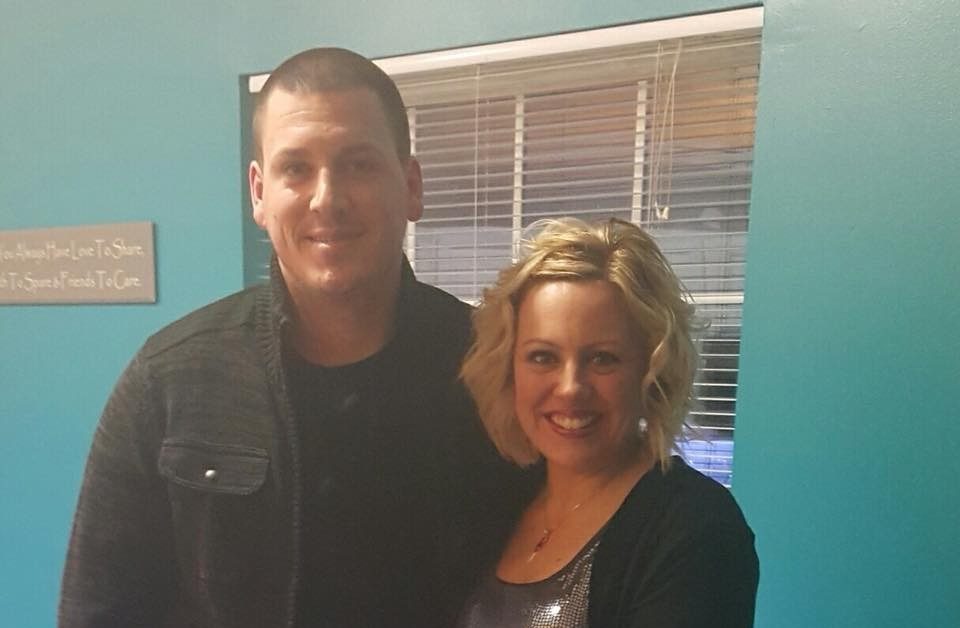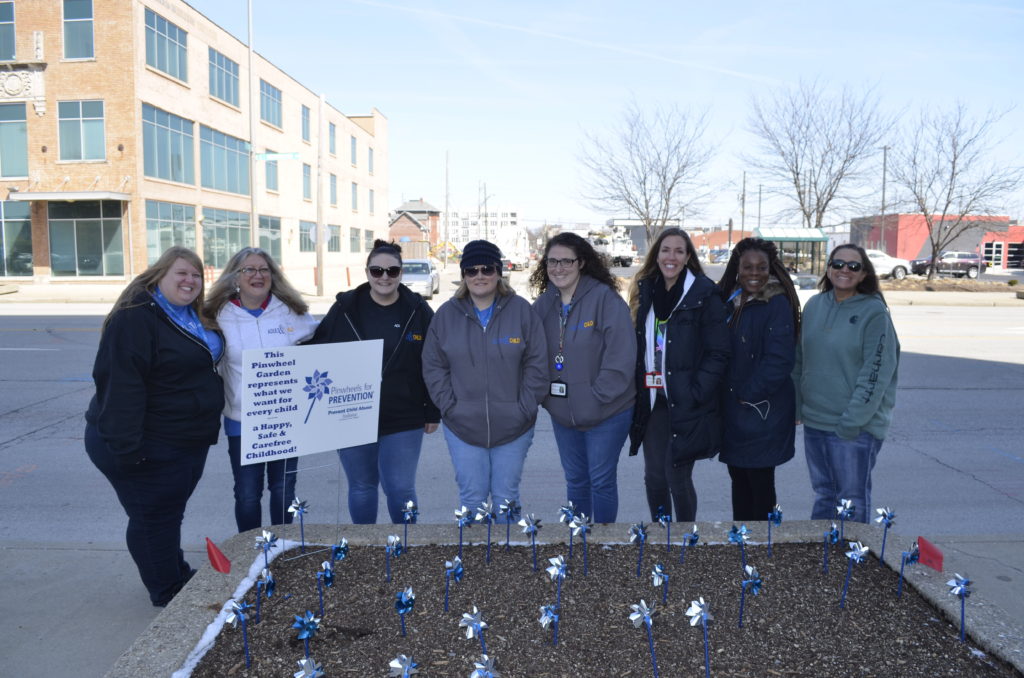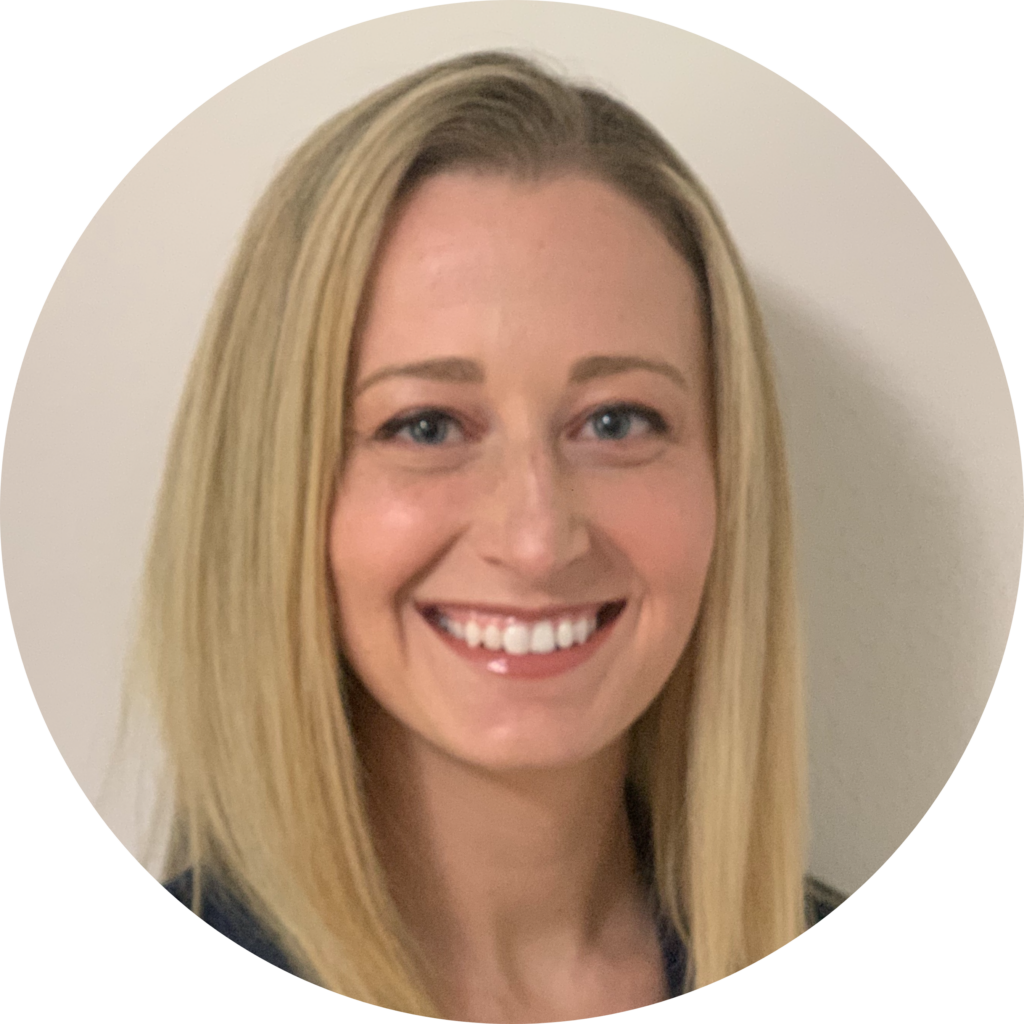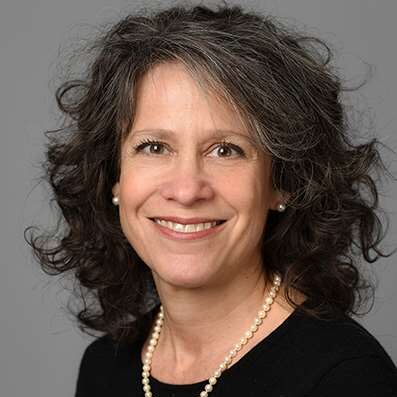Unsure about becoming a foster parent? Here’s 6 reasons you should.

Becoming a foster parent isn’t a decision to make on a whim. All sorts of training and licensing await parents who wish to become foster parents. They must consider how it will change their current family structure. They have to be sure it’s something they want to do. Beyond that, folks who consider foster parenting can be apprehensive for myriad other reasons. Adult & Child Health’s Therapeutic Foster Care team frequently consults with parents and prospective parents about their concerns. One of the most common worries they hear goes something like this: “I’m not sure my heart will be able to handle it whenever the foster child has to leave our home.” RELATED CONTENT: This Indy Man Grew Up in Foster Care. Now, He’s a Foster Parent. The A&C foster care team processes 400 to 450 placement requests each month, on average. The agency operates at 98 percent capacity most of the time, which means it doesn’t have enough families to handle some requests. We talked with Julie Stewart, Adult & Child Health’s director of welfare services, and members of the Therapeutic Foster Care team. They shared the most common questions they receive – and concerns they hear – from prospective foster parents. Here are six reasons you shouldn’t let your fears about foster parenting dissuade you from taking the next step and becoming a foster parent: RELATED CONTENT: Have more questions about becoming a foster parent? Click here for answers. 1. You have more control than you think. “Most people considering this are not clear on what their role would really be,” Stewart said. “Being able to have the final say about whether or not to accept a child into their home is 100% in the hands of the foster parents. The goal of everyone involved, most importantly a youth needing placement, is to ensure there is a good match.” The foster care team will listen to the criteria foster parents believe will be a good fit for their home, based on age and gender. Team members will then contact parents if they have a situation available that fits their desires. 2. You have resources here to help. “You’re not doing this alone,” one TFC team member said. “You have a team behind you.” The TFC team offers a variety of resources, from free in-house training for licensing foster parents to simply a network of support. Also, A&C offers primary care, mental and behavioral health assistance, school-based support and a bevy of other resources. “We’re a one-stop shop,” another TFC team member said. 3. Think about the child’s future. “You never know what kind of impact you’re going to have five or six years from now, but you can have an impact now,” one TFC team member said. “You’re getting something out of it, and they’re getting something out of it.” Are you interested in becoming a foster parent? Contact our Licensing and Recruiting Assistant, Kathy Rinks, at 317-893-0207, ext. 1207. 4. The rewards outweigh the sadness at the end. The feeling of losing a foster child when their allotted time is up scares parents, TFC team members said. Their response? “Understand you’re going to provide something so much bigger than how you’re going to cry when you’re going to leave. There’s never too much love. You can’t love a kid too much. Allow yourself to feel.” Foster parent Tina Davidson added, “If your heart is broken when they leave that house, you’re the type of person who should be fostering.” 5. Where you are in life right now doesn’t matter as much as you might think. Foster parents come in various ages and stages of life. We license a wide variety of foster parents because we believe this will provide the best placements for kids. We encourage and support all foster parents. If parents are at least 25 years old, can support themselves without public assistance, have reliable transportation and a valid driver’s license, sufficient bedroom space and all household members pass background checks, they’re eligible! 6. We need you. Our foster families are consistently at about 98 percent capacity, which means our current foster families probably don’t have the space to take on additional children. The more families that are available, the greater the likelihood we can place siblings together. When our foster family base is more expansive, we can more easily match a child’s needs to a family. The more families we have dispersed throughout our service areas, the more likely we can place children in or near their own communities and avoid disrupting positive familiar connections for the child, like schools, peers, and positive role models. May is National Foster Care Month. Share and retweet our social media posts promoting foster families and announcing upcoming foster care-related events on our Facebook and Twitter pages. Still don’t want to become a foster parent? Consider a donation to our Therapeutic Foster Care program.
This Indy man grew up in foster care. Now, he’s a foster parent.

Adam Davidson speaks unemotionally, but frankly, when he reminisces about his childhood in foster care. The southeastside Indianapolis resident, originally from Edinburgh, bounced from one foster home to the next. His three youngest siblings, Brad, Brenda and Joe, were 9, 6 and 3 years old, respectively, when they entered foster care. Adam was 8 years old at the time. They entered through Adult & Child Health’s Therapeutic Foster Care system. Finally, when Adam was in seventh grade, he and his siblings entered yet another foster home. When they walked into Mike and Laura Burton’s house, they didn’t know their lives were about to change for the better. “That experience was awesome,” Davidson said. “They gave us everything and anything we ever wanted, and then some. We’re still in contact with them.” The Burtons eventually adopted Davidson and his siblings. This is where the story gets even better. It motivated Davidson to follow in the Burtons’ footsteps. May is National Foster Care Month. Share and retweet our social media posts promoting foster families and announcing upcoming foster care-related events on our Facebook and Twitter pages. Why Adam decided to become a foster parent It didn’t take long for Adam’s past in foster care to come up when he began dating his wife, Tina. He had temporarily become estranged from his adoptive family, and Tina encouraged him to re-connect. Adam and Tina have two biological children together. Cameron is 7 years old, and Sydney is 5. They decided, based on Adam’s upbringing in foster care and other factors, to become foster parents. “The parents that adopted us were about my age when they took us in,” Adam said. “I know what it’s like, not feeling the love, nurturing or attention that a kid needed. We’re just trying to make a difference. They didn’t ask to be in foster care. My wife and I stepped up and said, ‘Let’s try to make a difference in someone’s life.’” They’ve fostered five different children during the last four years, including the 2-year-old they’re currently fostering. “It’s totally different hearing about someone growing up in foster care and seeing it in action,” Tina said. “You can absolutely love your foster children as much as you love your biological children.” Have questions about foster parenting? Check out the questions our Therapeutic Foster Care team hears most often during training. How Adam and Tina decided to help Since Adam was a foster child in Adult & Child Health’s system, he and Tina returned to A&C as adults to become licensed as foster parents. “We contacted Adult & Child and told them what we wanted to do,” Adam said, explaining the process. “They did the background check; we had to do training and classes for 20 hours a year. The classes were very good and helpful.” They went through Adult & Child’s no-cost foster training. That said, it didn’t come without difficulties for Adam. “Being raised in foster care, some of the classes were hard to sit through, because of rehashing memories,” he said. Adam added that with his experience as a foster child, he was able to provide some additional insight to others who were going through the training, and even the instructors on occasion. “I’m more reserved and to myself, but my wife is more vocal and outspoken,” Adam said of his input during training. “When I feel like it’s an important thing to bring up, I speak up.” RELATED CONTENT: Learn more about how to become a foster parent. Why you should consider becoming a foster parent Adam and Tina have heard the concerns from prospective foster parents. One of the more common fears is, “What if I get attached to the kids, and then lose them?” The state of Indiana’s goal is for no child to reach age 18 without a permanent family of their own. “If your heart is broken when they leave that house, you’re the type of person who should be fostering,” Tina said. “You know that you made and impact and a difference in their lives, and you kept them safe.” “It’s all about giving back … just making an impact on the kids’ life,” Adam said. “I’ve been in their shoes. I know what it felt like to be in that position.” Are you interested in becoming a foster parent? Contact our Licensing and Recruiting Assistant, Kathy Rinks, at 317-893-0207, ext. 1207. Still don’t want to become a foster parent? Consider a donation to our Therapeutic Foster Care program.
April is National Child Abuse Prevention Month. See how Adult & Child Health is Taking Action to Help

Adult & Child Health joins hundreds of organizations across the nation in promoting April as Child Abuse Prevention Month. Every year, more than 3 million reports of child abuse are made in the United States. The trauma of child abuse has life-long effects on survivors and leads to a higher risk of health and wellness problems later in life. The rates of abuse and neglect are particularly staggering in Indiana. A new report from the Children’s Bureau of the U.S. Department of Health and Human Services shows Indiana had the second-highest rate of child abuse in the nation (18.6 victims per 1,000 children) in 2017, the last year that statistics were available. That’s more than twice the national average (9.1 per 1,000). RELATED CONTENT: Franciscan Alliance and Adult & Child Health Announce Health Clinic Transition Our services help combat child abuse Adult & Child Health aims to bring those numbers down with its resources and services. Our Community Based Treatment, School Based Services, Open Access program, Integrated Care and Addiction Services provide an element of mental health treatment that often stems from child abuse and neglect. These programs also provide prevention measures to decrease risk of future abuse and neglect. According to a Harvard University study, 53% of adults who experienced child abuse, neglect or verbal abuse dealt with depression, and 40% experienced PTSD later in life. At Adult & Child Health, we live out our mission every day. “With hope, compassion and creativity, we deliver life-enhancing physical, social and behavioral health care services.” That includes children in our Therapeutic Foster Care team and any child who has been victimized by child abuse or neglect. Additionally, our Therapeutic Foster Care team places children who have been subjected to abuse or neglect in loving, caring homes every day. “Research shows that protective factors are present in healthy families,” said Lynn Farmer, community outreach development specialist who works with A&C’s Therapeutic Foster Care program. “Promoting these factors is among the most effective ways to reduce the risk of child abuse and neglect. These factors are: nurturing and attachment, knowledge of parenting and of child and youth development, parental resilience, social connections, concrete supports for parents, and social and emotional competence of children. RELATED CONTENT: Adult & Child Health Advances Affordable Housing Through Two Major Development Projects Foster care team does its part Monday, to kick off National Child Abuse Prevention month, members of Adult & Child Health’s Therapeutic Foster Care team walked to the statehouse. They listened to speeches by Indiana Gov. Eric Holcomb and others about the importance of combating child abuse and neglect. Adult & Child Health has also planted blue and white pinwheels near the entrances to several A&C locations to raise child abuse awareness. “Our foster care program receives, on average, 450 referrals each month, and our occupancy rate among foster families is 95 to 98 percent. Although we aren’t provided the reason for the referrals, but “if the child is referred to foster care, there is very often a history of abuse or neglect,” Farmer said. “April is a time to celebrate the important role that communities play in protecting children and strengthening families,” Farmer said. “Everyone’s participation is critical. Focusing on ways to connect with families is the best thing our community can do to strengthen families and prevent child abuse and neglect.” We encourage everyone to do their part to bring Indiana’s child abuse statistics down. Don’t let one more innocent child become a statistic. If you want to learn more about how to become a foster parent, or learn more about our Therapeutic Foster Care team, visit our website at indyfostercare.org. About Adult & Child Health: Adult & Child Health strives for caring communities, where every child, adult and family has the opportunity to live healthy, happy lives. Accredited by the Joint Commission, Adult and Child is leading provider of life-enhancing physical, social, and behavioral services in central Indiana. For more information about Adult & Child, please contact Adam Wire, marketing and communications specialist, at 317-882-5122 or [email protected].
How an Adult & Child Health employee uses comic books and posters to brighten kids’ days

Adult & Child Health clients occasionally visit the ninth floor at the agency’s 603 E. Washington St. office. It’s one of three floors in the office that houses A&C’s Family Services. Kids and their parents or guardians often enter the ninth floor because they’re dealing with some sort of stressful situation. Clients from Therapeutic Foster Care, Home-Based, School-Based and Wraparound services occasionally visit. So do Parent-Child Interaction Therapy clients. When they enter the lobby, office coordinator Dale Kinney is often there to greet them. Visitors who look closely will notice comic books atop a file cabinet next to Kinney’s work area. Even folks who don’t collect or read comic books will recognize the names. Spiderman. Batman. X-Men. It’s just a small sample of Kinney’s collection, which he says is nearing 70,000. But they’re not there for Kinney’s amusement. Instead, he hopes they help bring a smile to any of the children who enter our doors. RELATED CONTENT: How Adult & Child Health and Sony Teamed Up to Make a Patient’s Dream Come True How comic books and posters help As you enter the ninth-floor doors, you might see children and families in the waiting area. But many don’t know this floor serves as a de facto visitation and therapy area. The comic books, Kinney says, are there for the kids to read and enjoy. It’s likely the children are dealing with a difficult situation, so he hopes they help diffuse whatever stress the kids who are reading them might be enduring. “The kids appear to be excited about the comic books, and Dale really engages with them to make them feel included and valued,” said Emily Sutter, Team Leader for Support Services-North and Kinney’s supervisor. “There is a very welcoming and inclusive feeling for the kids as they’re arriving for supervised visits, and it’s something they can really look forward to.” “The kids always look at them,” Kinney said. “It’s rewarding to see the looks on the kids’ faces (while they read).” Help from Hero House Comics Kinney gets some of the comic books from a nearby shop, Hero House Comics. Kinney’s a frequent patron there, and he’s become friends with the store’s owner, Mike Rittenhouse. He convinced Rittenhouse to donate comic books to Adult & Child Health that are in overstock. Kinney said he gets about 10 new comic books each month. He doesn’t get enough comic books to give away, but posters are a different story. The Owens Group, a public relations firm, supplies posters to Hero House. Kinney takes the extra posters to A&C to give away to the kids and their families, with Rittenhouse’s blessing. “They’re all thrilled,” Kinney said of the kids’ reaction to the posters. “The little guys, age 6 to 10, they really love it. Sometimes, they ask if they can have one for their brother or sister. They’re always well-received, even by the adults.” The posters usually follow a similar theme to the comic books, but they’re often more movie-based. Kinney recently gave away several “Solo” posters, from “Solo: A Star Wars Story.” “I feel inspired by Dale’s generosity and his desire to share his love of comic books with the children,” Sutter said. “I feel this gets to the heart of his character and his true desire to help our clients in his own way. For Dale, this is not just a place to have therapy and for children to visit their families, but a place to have fun and inspire children to explore their interests, such as comic books.” There are lessons here, too Kinney doesn’t just lay out comic books and hand out posters without any purpose. He selects the comic books carefully that he makes available to the kids. “I want to make sure the characters in the comic books are good role models, and they’re not just white middle-aged male role models,” Kinney said. “Stan Lee (the late comic book writer/editor/publisher) was a big advocate of that.” He ensures there are plenty of female characters in the comic books he brings to the office, including Jem and the Holograms, Moon Girl and Devil Dinosaur, among others. Although plenty of comic books address serious issues in children’s lives, he doesn’t bring those into the office. “That’s stuff we already talk about here,” Kinney said. Kinney started giving away the posters and books last June. He said he hopes to continue for the foreseeable future. In the meantime, he just wants the items to bring smiles to the kids. RELATED CONTENT: How Adult & Child Health is helping foster kids take on school The artwork doesn’t end there The 9th floor lobby walls include plenty of artwork the kids produce when they visit. Cutouts and crayon-colored images cover the walls. Kinney creates a monthly themed activity for the kids to do during their visits. For March, kids color shamrocks or decorate Mardi Gras masks cut out of paper plates. “That’s the real story here,” Kinney said. “The foster parents are impressed with Dale’s efforts and the children’s parents are grateful for the changes and improvements directed at making the lobby/visitation site more kid-friendly,” Sutter said. “Dale has made tremendous effort to make this space/lobby more inviting, colorful, and kid-friendly. The children look forward to seeing their work displayed for all to see.” Although these gestures may not seem big to Kinney, they matter in a big way for the many children who walk through our doors. Generous efforts such as this remind us that each team member plays a part in serving our mission daily.



